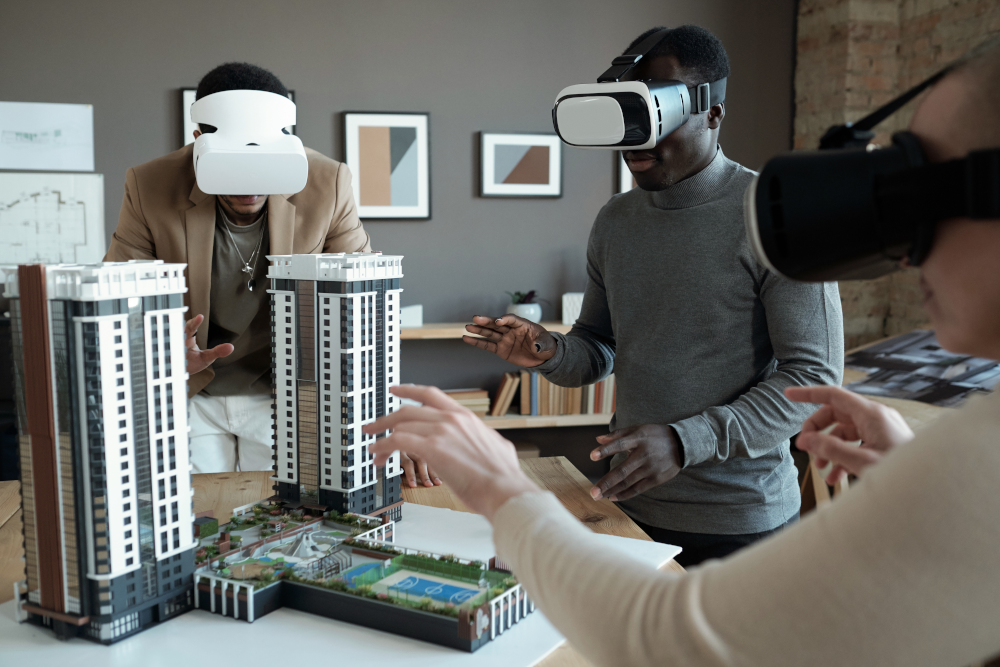
It’s time to step into the future of marketing with Augmented Reality (AR)! This tech is revolutionizing how brands spark conversations and captivate their audiences. Surveys are already singing its praises: a whopping 61% of 5G users find AR ads more intriguing than flat 2D ones, and 68% think these immersive AR experiences reflect super positively on a brand. Ready to see how AR can transform your marketing game from bland to buzzworthy? Let’s dive in!
Strategy 1: Try It On…In AR!
Despite the growing popularity of online shopping over the last decade, we’re all familiar with its risks. The dress might not fit right, the shoes could be too small, or the couch might be too big. Then there’s the disappointment when an item doesn’t meet our expectations, and we’re saddled with the hassle of returning it, either by mailing it back or physically taking it to the store, which just reminds us that this could have all been avoided had we just gone to the store in the first place. Up until now, the only sure way to know if a product is right for you has been to physically try it on or measure it yourself if it’s furniture. Unfortunately, feeling like you can’t make a purchase decision without visiting the store is a significant obstacle that slows down the customer’s buying journey. But things are beginning to shift as AR starts to bridge this gap.
With AR’s ability to blend our physical environments with digital information, brands can now create an interactive artificial environment that adjusts based on perception. Take IKEA, for example—which implemented an incredible demonstration of this technology. They’ve introduced IKEA Place, a tool allowing customers to visualize furniture in the digital rendition of their rooms. This innovation not only saves time when shopping online but also bridges the gap between browsing products online and the hesitation to make a purchase decision without seeing the item in person.
Strategy 2: Unlock Loyalty with AR Adventures
While many of us recognize that retaining customers is generally easier than acquiring new ones, brands must continuously think outside the box in order to keep their customers engaged, or else they might risk losing their customers to shiny new competitors that break into the market. Otherwise, they risk losing them to new and shiny competitors entering the market. Keeping a strong customer base requires building loyalty, but how can a brand go about this? When we look at our lives, we can see how loyalty within our circles is often built through relationships, where closeness develops as we learn more about each other—a principle that brands should heed. Now, AR offers brands a fresh way to share the spirit behind their product.
Consider the Night Walk campaign by Patrón. Through AR, consumers can virtually visit the Hacienda Patrón distillery to learn more about the people behind the product and the processes it undergoes before reaching its final form. With this innovative tool, consumers can immerse themselves within the brand experience, becoming more engaged with the product and deepening their relationship with the brand.
Strategy 3: Tell Stories That Stick
With hundreds of stories uploaded to the internet daily and a vast amount of information at our fingertips, it has paradoxically become more challenging for people to truly connect with stories. The internet moves fast, requiring our attention to shift rapidly to keep pace. To capture your audience’s attention long enough to engage them or even captivate them with your brand’s message, your strategy must be impactful.
Look no further than The New York Times for an excellent demonstration of how to leverage AR to tell a compelling story that draws readers in. By creating a digital reality where people can interact with or immerse themselves in a story, there is a much higher chance of them forming a connection with the brand in ways that traditional media simply cannot achieve.
Final Thoughts
AR isn’t just changing the game—it’s completely redefining how we connect with brands and their stories. From trying on a virtual sofa in your living room to walking through a distillery from your couch, AR is making every digital interaction an adventure. It’s clear that AR isn’t a fleeting trend; it’s a monumental leap towards making marketing more interactive, engaging, and, yes, fun! So, why not start weaving some AR magic into your marketing mix? It’s time to push the boundaries, get creative, and give your customers an experience they’ll not only remember but one they’ll want to return to again and again.

